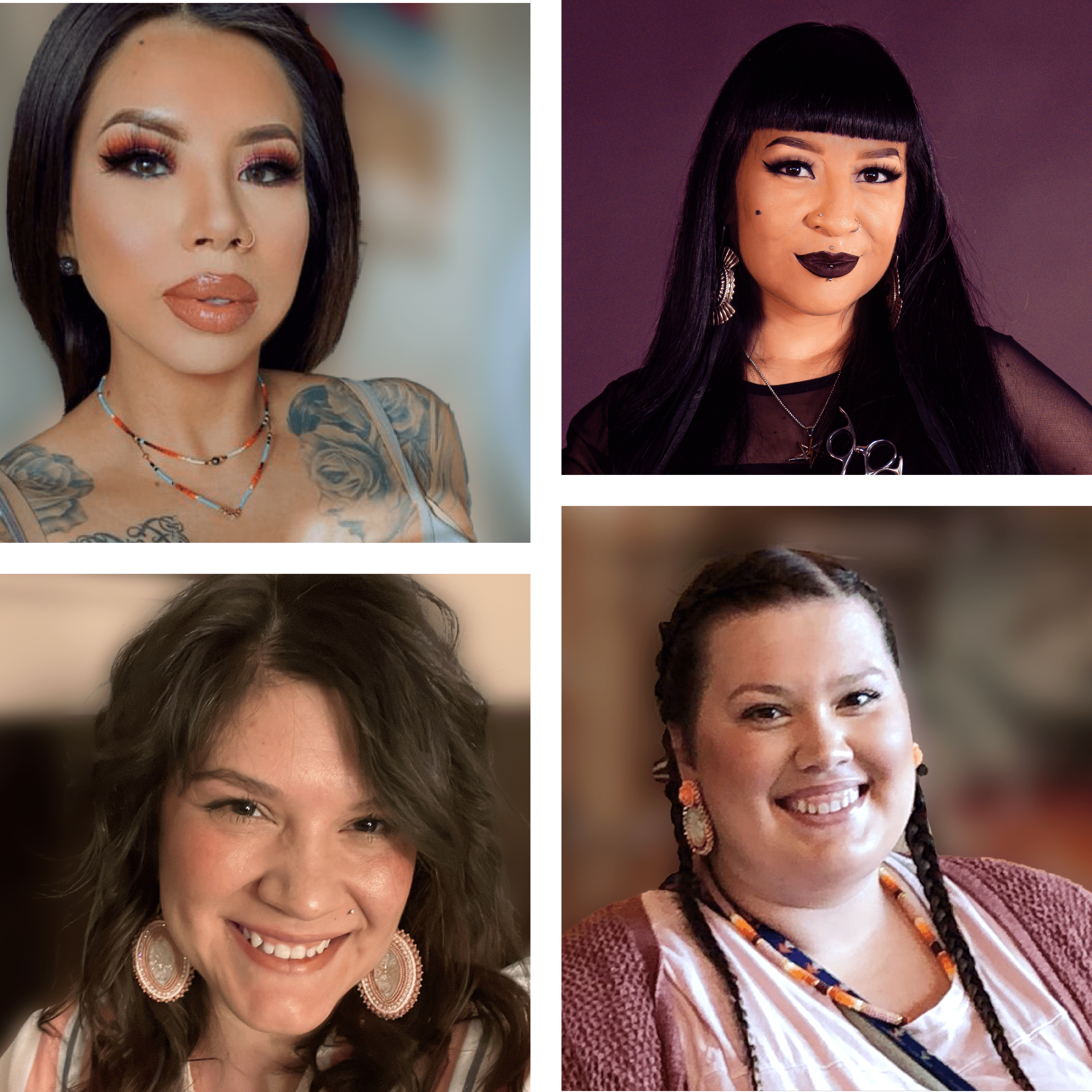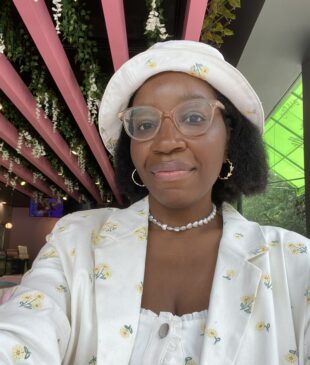While each and every month, The Tease aims to spotlight and amplify underrepresented voices, this month specifically, we are turning our attention to uplifting the Native American/Indigenous community to celebrate Native American Heritage Month. For those who don’t know, November marks Native American Heritage Month, a month-long celebration that highlights the achievements and contributions of Native American and Indigenous peoples.
With this month comes the opportunity to educate ourselves on and recognize their teachings, their culture, and most importantly, their history—which is so often overlooked or just forgotten. To honor this notion, The Tease listened to four Indigenous salon professionals within our industry to amplify their experiences and learn about how their respective backgrounds have shaped the way they approach their work and their relationship with beauty.
Ahead, hear straight from these four inspiring hairstylists and artists about the significance of long hair in Indigenous culture, how they honor their heritage, and why representation in the salon industry is so important.
Monique Lewis, (@moniquelewishairmakeup)
Hairstylist and Co-Owner of Rosebud Boutique Salon
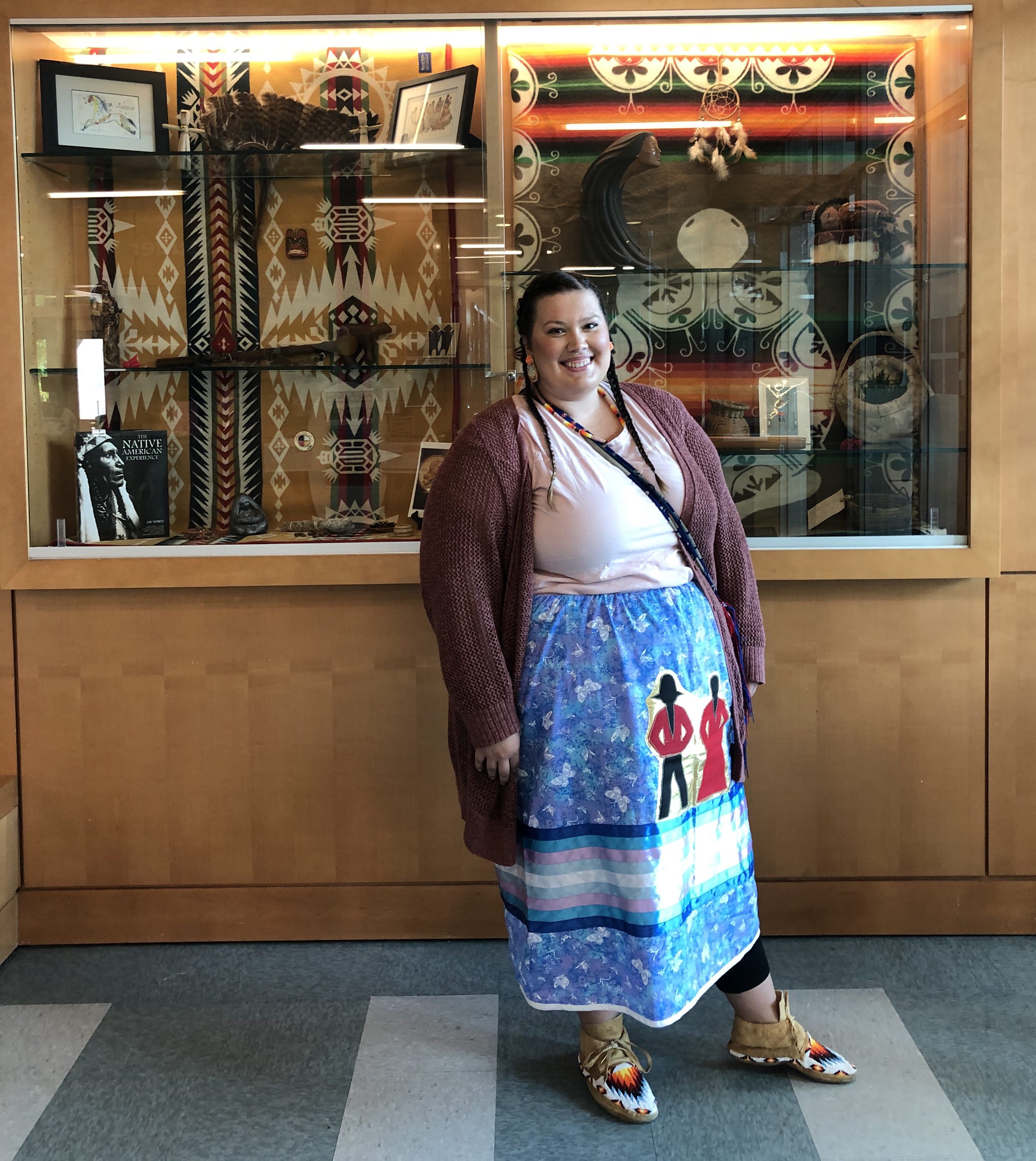
Indigenous Nation(s): “I’m a Shoshone-Bannock tribal member. My tribes are located on the Fort Hall Indian reservation in southeastern Idaho. My family is both Shoshone and Bannock, and we’re direct descendants of Chief Eagle Eye of the Weiser Shoshone, and of Cameahwait—Sacajawea’s brother.”
Favorite Indigenous-Owned Beauty Brands: “Some of my favorite Indigenous beauty brands include Prados Beauty and Cheekbone Beauty.”
On How Her Indigenous Heritage Shapes How She Sees Beauty: “I was raised in Portland, Oregon. So, being somewhat removed from the reservation, and having a foot in two different worlds has changed how I see beauty and fashion in general. It can be confusing, and different depending on where and who I’m with. In Native culture, beauty and fashion is colorful, loud, red lipstick, and rainbow beading earrings the size of your hands. In the city, and especially one as Non-Native dominated as my hometown is, bright colors aren’t as accepted or typical to see. I’d liken it to going from color TV to black and white movies.”
On the Significance of Hair in Indigenous Culture(s): “Hair is so important in my family and culture! I’ve always been taught that our hair and appearance is a reflection of our family—the entire extended family, our ancestors, and all of Indian country. My older sister and I were always taught to never have our hair not “done.” Hair should be clean, and braided or styled—always. My nephew has long hair, and most of the boys in my family have longer hair. Long hair, to me, is the memories and experience of your life that you carry with you. It helps to ground you to the Earth, and if/when we do cut a significant amount it’s because we’ve had a death in the family and we’re in mourning.
As an adult, I started growing my hair long again, and one of the elders in my family passed earlier this year and I had decided to cut my hair. It’s something that I didn’t expect to affect me so greatly, but it was very emotional for me. The life and memories I cherish with my loved one who had passed was represented in the hair I had cut, and I’m honored to have been able to honor her passing with that act. That being said, every single tribe, nation, family, and person is different. Customs can be vastly different from tribe to tribe or person to person.”
On the Impact She Thinks the CROWN Act Will Have on Indigenous Communities: “I’m not sure that the CROWN Act will or won’t have an effect on Native communities. For the most part, these younger generations are taking back our culture, and going back to traditions that haven’t been accepted or have been illegal for so long. So many reservations are in such rural areas, that I’m not sure it’s about Indigenous peoples, as much as it will make the surrounding communities accept others’ traditions and choices with their bodies.”
On Her General View of Indigenous Representation in the Salon Industry: “It’s such an exciting time to be in the hair industry as an Indigenous person! There’s so much representation starting to be in the mainstream, with shows and movies like Reservation Dogs on Hulu and Prey. It’s been so awesome to see the red carpet looks of the actors and really get inspired to try different styles while still repping for Indian country. There’s ALWAYS room for more representation, and even more evolution of the hair industry. Three years ago, myself, my sister, and our parents opened our salon. Since then, we’ve had so much support from Native people, and truly people of color. Native people love looking good. We love having our hair done just like anyone else would. We take pride in our looks, and our hair is such an extension of ourselves and our culture.”
On What Native American Heritage Month Means To Her: “This month is bittersweet. Native American Heritage Month means Thanksgiving, which is a hard time for the culture. We’re coming off of a high anxiety holiday like Halloween where people are still dressing like us for a costume. This is also a month I was enrolled in my tribe after waiting for 30 years! There are a lot of hard conversations to still be had, and a lot of times, those conversations are being had while I’m working or doing someone’s hair.”
On How She Feels People Can Better Support Indigenous Talent and Brands: “The best way to support Native, is to buy from Native people! Support their art, buy earrings, art, etc. from us. Everyone can buy and wear Indigenous products and jewelry. Everyone can patronize Indigenous businesses! Watch TV shows like Reservation Dogs —see what our culture and people are like. Native people are incredibly funny, and love to laugh. Expose yourself to what contemporary Indigneous people are like, and that in of itself is support.”
Daphne Coriz (@dyedyemydarling_abq)
Hairstylist and Owner of Dye Dye My Darling Hair Studio
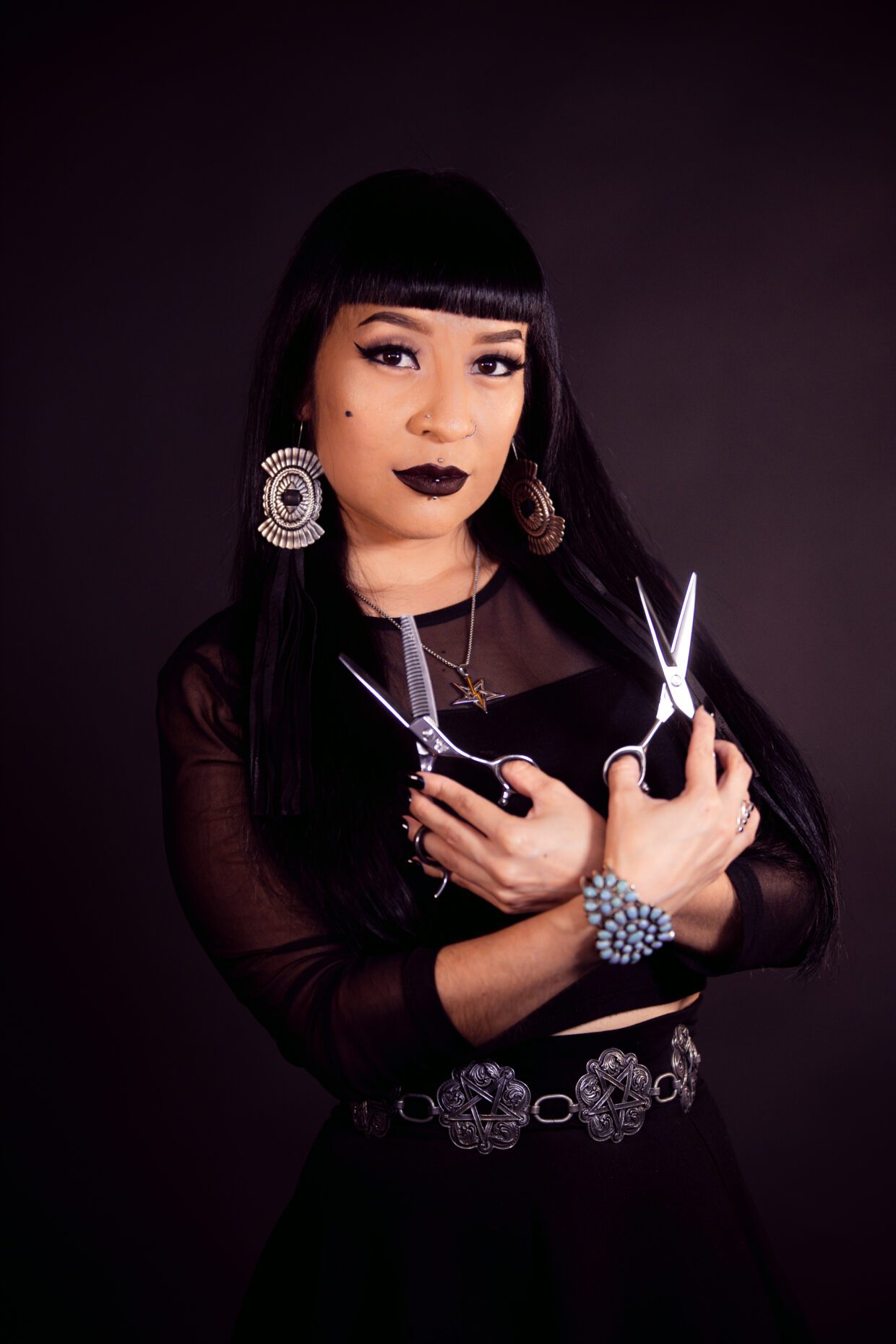
Indigenous Nation(s): “My maternal clan is Yaac (corn) and my paternal clan is Sha’wath (parrot). I come from one of the 19 Pueblo tribes (reservations) in New Mexico; traditionally named Kewa, but is better known as Santo Domingo Pueblo. My hair studio, Dye Dye My Darling, is located within Tiwa Territory (Albuquerque, NM) which is about 40 miles south of Kewa.”
Favorite Indigenous-Owned Beauty Brands: “Many of the Indigenous beauty brands that I am familiar with and support are: Blended Girl Cosmetics (Diné), Cheekbone Beauty (Anishinaabe), Prados Beauty (Yoeme), Frybread Cosmetics (Taos), Ah-Shi Beauty (Diné), Dancing Butterfly Naturals (Taos).”
On How Her Indigenous Heritage Shapes How She Sees Beauty: “I grew up in culturally traditional households. My paternal grandmother, Marie, was the first person who introduced me to ‘Pueblo bangs.’ Historically, Pueblo people have always worn bangs. These bangs are typically cut straight, blunt, and thick about eyebrow level. It is depicted that several godly entities and ancestors in Pueblo culture wore these bangs. In many cases, they also represent what Pueblo one may come from, if they hold a leadership role, or what stage in life they are currently in. So I like to believe that this is why we continue to wear bangs like we do; to honor our ancestors.
When I finally received my ‘Pueblo bangs’, I was about four or five years old. [My grandma] cut my bangs. I disliked them. I cried to my mom. I recall my grandma cutting my brands in this same manner, more or less, 3 times. I wore my bangs until I was about seven or eight. By then, my bangs had grown out. Late 1990s hairstyles consisted of several colorful rubber bands, butterfly clips, zig zag parts, gel, and Sun-In. That’s what I wanted and mom delivered. Dorothy, my mother, went to beauty school from 1975-76. She introduced me to the perm, hair coloring, and edgy haircuts. She tended to all my hair needs until my teens. She was always encouraging of trying out hairstyles and colors that were popular during me and my brother’s youth.
These hair experiences made a huge impact on me, although I didn’t recognize them as such at those ages. As I got older, I was taught the ways and became familiar with what a modern, traditional Pueblo woman should be, how to carry ourselves, and how to represent ourselves. When it comes to image, the respected look is having long hair with bangs, uncolored hair, no makeup, and au naturel, especially as you are to enter ceremonies and dances. This look connects us to our ancestors. It keeps us rooted to this land, to the elements. It represents our past, our journey, our families. It upholds our resilience and pride for who we are as Indigneous, Pueblo people. And this is what beauty is to us.
As generations come and go and grow, this look tends to change and adapt. I, myself, struggled with this idea in my younger days, to “rock” the traditional Pueblo look. A part of me never felt confident enough. At that time, I was slightly brainwashed to believe the Westernized standards of what ‘outer beauty’ was (thank you America’s Next Top Model!). But in that same breath, I found my interest in wanting to enter the beauty industry. Maybe deep down I felt the need and inspiration to possibly change the way we, as Indigneous people, approach what ‘beauty’ is.
As I matured and became more confident with myself, and after being in the beauty industry for almost 10 years as a modern Pueblo woman, I’ve found myself to be a professional chameleon. I uphold, respect, and wear my traditional Pueblo look as needed. When that particular time is done, I can transform myself however I desire with hair color and makeup. I’ve learned to integrate my own personal styles which include goth, punk, and alternative looks, with my Indigenous (Pueblo) style. I have self-proclaimed this ‘Indigegoth’ style. Being able to find a ground where I can represent myself fully with confidence, harmony, and balance between Indigenous culture and Westernized culture, is what makes me feel beautiful. This is what I encourage my clients to do, as well.”
On the Significance of Hair in Indigenous Culture(s): “Indigenous cultures are not one in the same. We all have different languages, regalia, songs, dances, foods, stories, teachings. But a couple of things that we have in common is honoring our land and honoring our hair. What I have learned about hair in Pueblo culture and my experiences of working with Pueblo people’s hair is that those two things are related. Our hair is what keeps us rooted to this Land, where we emerged from in the Beginning. Long hair is significant as it is an extension of our identity. Long hair represents our past, our journeys, our families, and our ancestors and spirits. It shows our resilience, our age, wisdom, and strength.
Every one of us has a story and that story is shown through our hair, no matter how short or long. Regardless of length, there are special ways of how our hair is to be taken care of and handled. Not just anyone should touch our hair. Only select relatives and/or spouses can handle our hair; a person of understanding, trust, and with good intent. Lengths vary and do change for everyone throughout our lives for one reason or another, but having long, medium, or short hair does not make anyone more or less Pueblo or Indigenous. It is how you honor your hair as an extension of who YOU are! Also, for Non-Indigenous folks, absolutely do not touch an Indigenous person’ hair under any circumstances without permission!”
On the Impact She Thinks the CROWN Act Will Have on Indigenous Communities: “One of the most challenging instances I have faced while reflecting on this topic, is recognizing the historical trauma we have faced simply because of our hair. As a way of Americanizing Indigenous people by cultural assimilation, the off-reservation boarding school was developed. Indigenous children and young adults were kidnapped from their families and tribes by the U.S. government and sent off to boarding schools throughout North America to begin the Americanization process. Upon arrival, each child was stripped of their tribal name and long hair shorn. This idea forced our elders and children to believe this was the accepted form of hair to wear in society.
Unfortunately, Indigneous people have been shamed for decades for having long hair, especially young boys and men. This is still quite prevalent to this day. Thankfully, as many of us are working through these historical traumas and reclaiming our cultures, more and more of our children, youth, and elders are learning, remembering and embracing their hair and cultural hairstyles. However, many of us still face discrimination in school and work-related spaces for wearing cultural hairstyles, often being deemed as unprofessional, dirty, or distracting. For example, I’ve personally heard stories and read of students graduating from high school or college being denied the opportunity to walk in their commencement ceremonies for wearing cultural hairstyles. In some cases, this has the effect it was meant to have: to eliminate the pride and identity on that individual. But, I also believe this ultimately adds fuel to our fires to continue to wear what we know and is our identity.
I believe that the CROWN Act will work its way into benefitting Indigenous people in public education and work spaces. It’s now just a matter of educating each other on the importance of all cultural hairstyles, Indigneous or not. I find it’s also important to educate non-POC of the harm cultural appropriation does on POC communities.”
On Her General View of Indigenous Representation in the Salon Industry: “In my 10 years of being in this industry, my view of Indigenous representation in the professional beauty industry has always reigned small. Representation is scarce and often appropriated in the industry.
Deservingly, the Indigenous beauty and fashion industry is flourishing! Being a part of the industry we have created for ourselves makes me feel 100 percent included. It’s not just a growing and successful industry that is built by and for Indigneous people, but it’s a community. A space that allows us to be exactly who we are. I believe taking this into our own hands and creating this community for ourselves first, is and will be the way we will be fully and accurately represented in the broader industries. We not only want to demonstrate our arts, creativity, versatility, beauty, and culture. We want to educate Non-Indigenous folks that WE ARE STILL HERE and you, as a professional, are probably creating and operating on Indigneous land. We are a people of many trades. We are storytellers and we deserve to be recognized. If that makes anyone feel uncomfortable, we were never for you. I realize that we may never hit the mainstream market and that is okay. We know what we need to do to keep our community together and continue to prosper.”
On What Native American Heritage Month Means To Her: “I always found it ironic that Native American Heritage Month takes place during the same month of Thanksgiving, but understanding how misconstrued the history of Thanksgiving has always been, I can see why they should go hand in hand. This month means education and awareness.
I’ve personally never taken the time to ‘celebrate’ Native American Heritage Month. I was fortunate to be taught to honor and practice my culture every single day, even just for a moment, but not everybody has the opportunity to do that. I think this month holds an opportunity for Indigneous people who may feel disconnected for one reason or another, to gather the strength and security to seek reconnection with their communities and culture. I find it to be a time that motivates us to bring awareness to issues in our communities that are difficult to bring forth or to be noticed any other time. I’d hope that this month encourages the younger generation in our communities to speak their truth and rewrite history. I’d hope that this month encourages Non-Indigenous people to acknowledge the land they stand on and seek ways to support our movements.
As a hairstylist, I use my ‘platform’ behind the chair or on social media to bring awareness to and educate my clients(Indigenous and Non-Indigneous) of Indigenous/POC topics and issues. I hope they understand that these issues have a major impact on the communities and tribes we come from. When one person is affected, we are all affected. I want to encourage my Indigenous clients to honor themselves. I want them to remember that they are supported and they absolutely matter. Kinship is important and I am beyond blessed to have the opportunity to provide that with my career.”
On How She Feels People Can Better Support Indigenous Talent and Brands: “First and foremost, I encourage all people to respect all cultural hairstyles. Hair is not just hair for everyone. We all have a story that is interwoven into our hair and it needs to be respected. If you see a hairstyle that is predominately worn by POC communities, do your best to educate yourself on the significance it holds before wanting to adorn yourself with it. I encourage people to seek out Indigneous hair artists/ beauty brands in person or through social media and support us in any way you can—a “like” or share does a lot! Include us in your stories, your fashion shows, and your campaigns. Regardless of whether we receive the support or not, our Nations are vast and backed by many. There aren’t any signs of us slowing down, we are going to show up!”
Trysta Cook (@trysta_beautylife)
Hairstylist and Makeup Artist
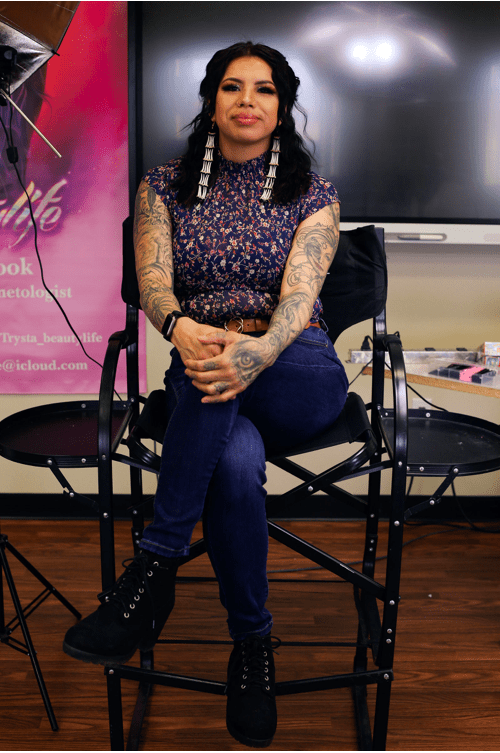
Indigenous Nation(s): “I come from the Onion Lake Cree Nation that is located in Treaty 6 Territory.”
Favorite Indigenous-Owned Beauty Brands: “Cheekbone Beauty. I feel [the founder, Jenn Harper] really paved the way for us Indigenous people in the beauty industry. Seeing her beauty campaigns across the country, in mainstream society, is super inspiring. She’s even in Sephora—that alone is a big inspiration! Not only is her makeup line Indigenous-owned, but it’s sustainable by nature. She is storytelling our Indigenous roots with makeup and it’s amazing. She also gives back to the Indigenous community which is why she’s my favorite Indigenous brand.”
On How Her Indigenous Heritage Shapes How She Sees Beauty: “Being in the beauty industry for nearly two decades, I was able to see ever-changing trends and looks of fashion, but to see it from an Indigenous person’s perspective was different. Everyone was looking at the mainstream beauty standard—always trying to fit in, myself included. I was always coloring my hair and cutting it all off. Growing up in the ‘90s as kids, we all had the Barbie doll—it was light skin, blue eyes, and blond hair. That was pretty for us. We never saw a Native person on any platform ever, so it started when I was young, what pretty was. Also, growing up on the reservation my whole life and having my reserve accent also made me feel insecure because when we left the reserve to play sports or shop, we were automatically looked down on and discriminated against. I remember being young and wishing I wasn’t Native because of how we were treated by our looks. I didn’t feel accepted or beautiful.
As I got older and I started to leave the reserve and pursue my career, I wasn’t the scared little Rez girl anymore. I was getting used to being the only Native at work and I was able to be there for my fellow Indigenous people. The beauty industry was changing and in 2010, I applied and got accepted to be a supporting hairstylist at the Saskatchewan Fashion Week in Regina. I had an amazing experience, but I was the only Indigenous person there. A year later, I volunteered to be a hairstylist/makeup artist in Saskatoon Saskatchewan. This time, it was different. It was all Indigneous peoples from photographers to designers and models. It was an amazing experience—life-changing! After that photoshoot, I teamed up with the photographer and designer and we started having our own fashion shows and photoshoots. Indigenous representation in the beauty industry was starting to rise. The beauty standard was starting to change. I was able to see and be part of the positive changes we had in the beauty industry.
Now, in today’s mainstream society, you can see Indigenous representation in every platform. We have role models now for the younger generation and I feel that it’s so important for these Indigenous people to be on billboards and in our local shopping malls because it changed the beauty standard for us. We have more pride in dressing in Indigneous fashion now. You can see people in ribbon skirts and moccasins almost daily at your local grocery story. People wearing long hair and Indigenous jewelry proudly. The younger generation can now look up to these people and feel beautiful to just be ourselves. Instead of trying to fit into the old beauty standard, the beauty standard is us now.”
On the Significance of Hair in Indigenous Culture(s): “Our hair is sacred, but I feel like we lost that when the residential schools cut off our hair and made us feel shameful. Being in the beauty industry, we are gaining our pride in wearing our long hair again. Our hair holds our strength and our connection to Mother Earth. Wearing our long hair shows our resiliency and we are so proud of who we are.”
On the Impact She Thinks the CROWN Act Will Have on Indigenous Communities: “I feel like once the CROWN Act passes, which ends hair-based discrimination, it will leave a positive impact for all Indigenous communities, on reserve and off reserve. It shows reconciliation by working towards cultural understanding between hair and its connection towards Indigenous people. I feel like the Indigenous community will feel more safer and respected. They won’t have to worry about anyone saying or doing something to them for having long hair.”
On Her General View of Indigenous Representation in the Salon Industry: “I have been in the beauty industry for the last 18 years. I started when there was little to no representation. At the time of the beginning of my career, I didn’t realize how important my role was as one of the few Indigenous hairstylists in my hometown until random Indigenous people started requesting me for hair appointments. The salon I worked at was located in the only mall on a busy Highway 16, so we had a lot of traveling visitors driving through. These clients who I never met before would sit in my chair and tell me, ‘I chose you to do my hair because you’re Native and I don’t want just anyone to touch my hair.’ I heard that a lot as time went by. Only then I started realizing how important it was being a visible Indigneous hairstylist. I say visible because my skin is brown, my hair is dark, and my Rez accent is thick. I feel like once they heard me talk, they felt even more comfortable with me. This is how my career started to take off. I was getting known as the Native hairstylist in Lloydminster Mall.
Now that I’m older, I understand why us Indigenous people are so picky with who touches our hair. It’s hard to trust random people to touch it. I feel like it all started when the residential schools were around and that’s a really long story, but I’ll cut it short. The older generation had their hair chopped off—sometimes their head shaved. They took away our long beautiful hair. It was a very traumatic experience for them. Since then, the trust was lost. So, when an Indigenous person sees an Indigneous hairstylist working in a salon, we automatically trust each other and feel comfortable. That’s what I got from the years working in a public salon and why Indigenous representation in salons is super important. These days you can find Indigenous hairstylists in almost every town and city, which is amazing.”
On What Native American Heritage Month Means To Her: “I raised my son off reserve for the last 14 years and having Native American Heritage Month now is great for our nation. There is so much to be shared. A lot of people have no idea of this country’s history. I feel like having this month really opens a lot of people’s eyes to what our people went through and that our relationship with Non-Indigenous People is getting better. I’m thankful for this month. It really gives me hope for our future generations.”
On How She Feels People Can Better Support Indigenous Talent and Brands: “All kinds of support is welcome for us Indigenous people—even just saying hi, sharing our social media pages, and asking us questions (don’t be afraid to ask!). Also, I feel like a lot of Non-Indigenous people are buying and wearing our art/jewelry which I think is fine and shows that our culture is appreciated. There’s a lot of big Indigenous brands out there, but I love supporting small businesses—the local beaders/dress makers. I feel like buying from them really shows my support.”
Gabrielle Goodsell (@gabsofsteele)
Hairstylist and Co-Owner at Rosebud Boutique Salon
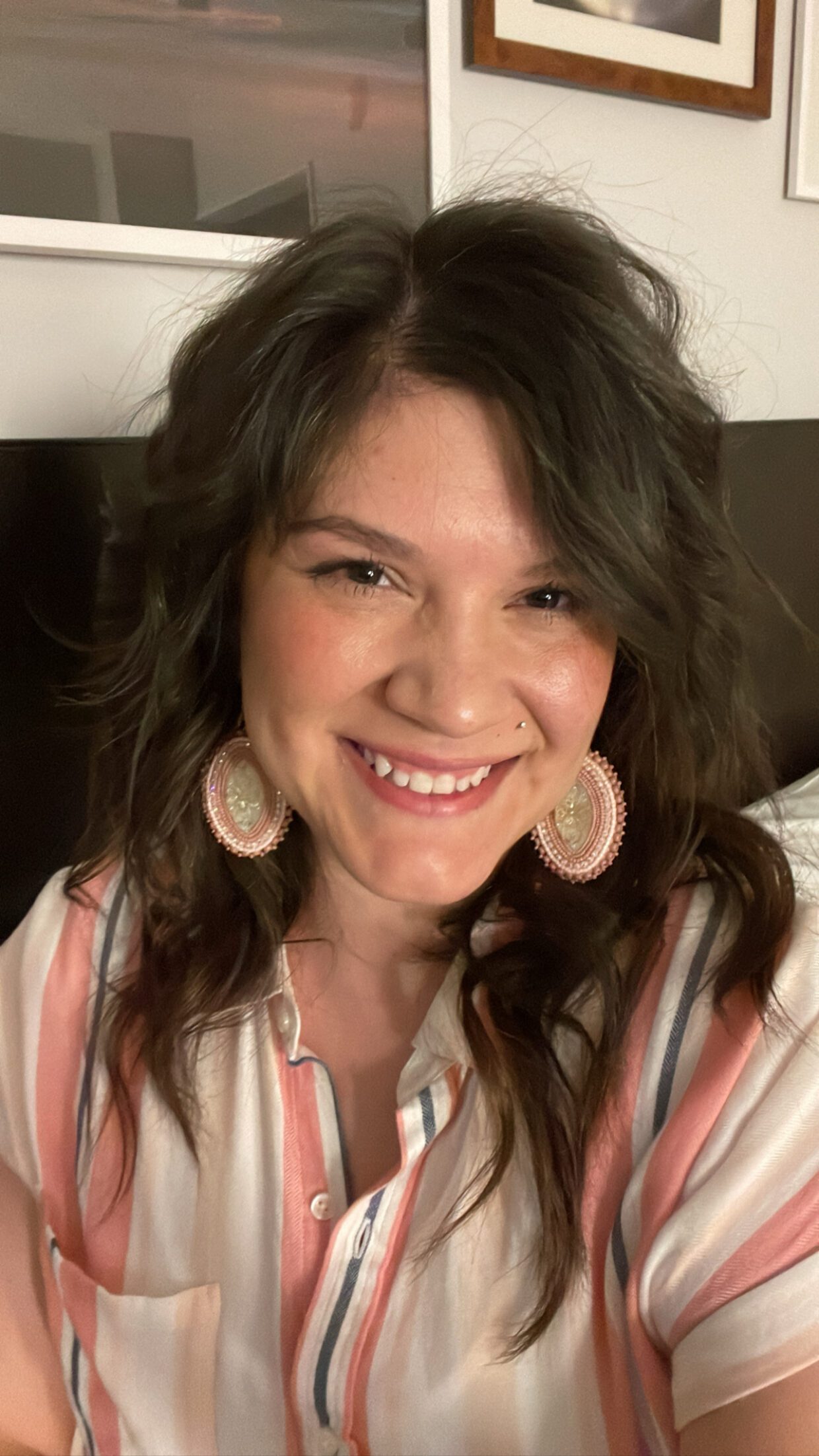
Indigenous Nation(s): “I am a registered member of Shoshone Bannock Tribes.”
Favorite Indigenous-Owned Beauty Brands: “Cheekbone Beauty, Prados Beauty, and Sister Sky.”
On How Her Indigenous Heritage Shapes How She Sees Beauty: “Growing up in a big city there were many influences of beauty and beauty standards, but none that quite seemed to represent me, an Indigenous girl. Dark hair, dark eyes—it was hard for a long time to find makeup that didn’t make me look ashy and washed out or just the wrong shade of “dark”. Hair products that didn’t make my naturally wavy hair misbehave. A common stereotype is that ALL Natives have long, stick-straight hair. Over the last decade and with the development of social media, I do think it’s been easier and more encouraging to find women of color showcasing beauty trends. I’m happy to be an Indigenous artist part of that movement, an example to Indigenous youth, and a haircare provider to fellow Indigenous peoples. I feel as an adult I stand stronger in my knowledge of my culture as well as my profession. I’m so proud to provide these services for such a sacred part of our culture. To provide a safe space to those in an emotionally challenging time. To be able to help them through this culturally and emotionally significant task.”
On the Significance of Hair in Indigenous Culture(s): “I was taught that we carry our spirit in our hair. It’s the backbone of who we are. It’s what connects us to Mother Earth. When we lose a loved one, we cut our hair to honor them and their life. Signifying life has come to an end when we are mourning. The new growth represents strength, moving on, and life after the death of a loved one.”
On the Impact She Thinks the CROWN Act Will Have on Indigenous Communities: “As a grandchild of a boarding school survivor, I have witnessed first-hand the generational trauma of forced cutting. It’s time to decolonize. I do think the CROWN Act is imperative, especially for our youth. My hope for the CROWN Act is for all cultures to recognize the diversity of beauty we hold in our hair. Whatever your ethnicity, there is so much effort and love that takes place while “styling.” For my family, we make a good effort to think good thoughts while braiding each other’s hair. It is the energy you give them to carry throughout the rest of the day. Body, mind, and spirit is what the three strands of our braids represent. These three intertwined are the strongest.”
On Her General View of Indigenous Representation in the Salon Industry: “In days passed, there weren’t many Indigenous stylists or Indigenous salons. It can be very overwhelming and sad to have to explain the emotional hurt while having your hair cut for a loved one who has passed. It’s comforting to be in a space where you don’t have to explain. Rather you get to celebrate the life lost and just be in the moment with a stylist who culturally understands the process. For example, after cutting it, some like to keep their hair and return it back to the Earth at a later time. Some only cut on a new moon. I see more and more Indigenous artists and I know in our local community, we are truly celebrated and supported by our Indigenous brothers and sisters.” Our clients are as excited as we are, Native and Non-Native alike. We feel so grateful and honored to create a space to grow and learn with each other. Not only on social media, but to be able to have a space to physically come, decompress, and get pampered!”
On What Native American Heritage Month Means To Her: “For Native American Heritage Month, I am excited to hear there is a feature on our culture within the beauty industry. There are so many beauty lessons we can learn from each other and I for one am excited to share my heart. I wear my hair long for those who weren’t allowed to.”
On How She Feels People Can Better Support Indigenous Talent and Brands: “If you want to support Native American-owned beauty products and artists in salons, it is as simple as sharing our artistry with friends and family—making small purchases and when in need of a new makeup or hair artist, schedule an appointment! For those local to Portland, OR, visit www.rosebudboutiquesalon.com.”
These interviews have been edited for length and clarity.
